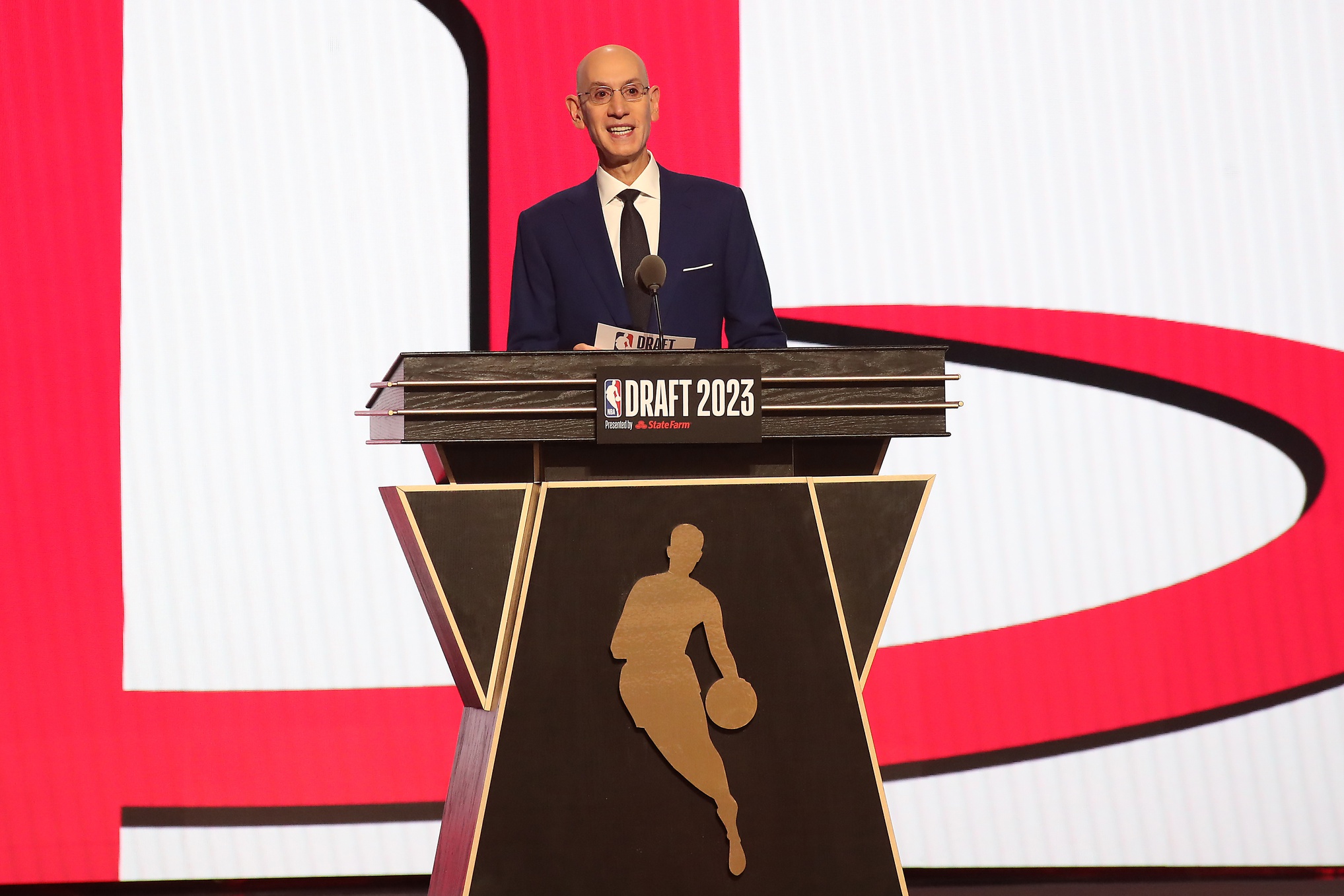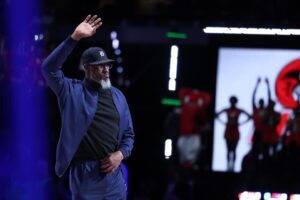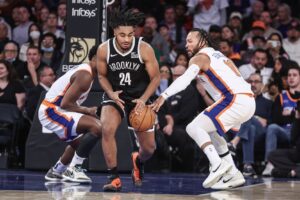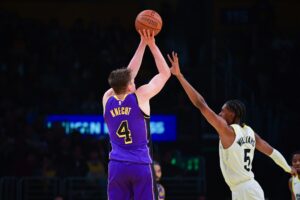There are more avenues than ever for prospects to reach the NBA Draft. In the not-so-distant past, college basketball accounted for almost all draft picks outside a few foreign players.
The NCAA for a long time has mostly been a monopoly on athletes that wanted to play professionally. The tides have certainly started to change though, and it could have negative implications for college basketball.
Is College Basketball Losing NBA Draft Importance?
Trending In The Wrong Direction
In 2018-19, the NBL (a well-established Australian professional league) created the ‘Next Stars’ program. In 2020, the Ignite program was created for top prospects to play in the NBA’s G-league system instead of college. For 2021, the Overtime Elite program was created for NBA hopefuls. This was a popular company that kept up with top high school prospects and was mostly famous for its YouTube channel.
Are you seeing the trend? In three consecutive years, three different programs were created to entice NBA-level talent from the high school ranks.
All of this, and we haven’t even mentioned or included overseas or traditional international players. These international leagues have long been talked about as having somewhat caught up to the USA in producing stars. This statement comes on the backs of current superstars like Luka Doncic, Giannis Antetokounmpo, and Nikola Jokic.
No Signs Of Slowing Down
If college basketball has been the primary source of NBA talent for decades though, why should they be worried about startups? Often startups with lofty goals such as these usually fail anyway.
Unfortunately, that hasn’t been the case. For the new programs mentioned, there’s an easy case that every one of them has been an outstanding success.
The NBL’s program boasts that they’ve seen eight players drafted since their inception, with three being lottery picks. Lamelo Ball is currently their most famous being he’s a franchise player and was the third overall pick in 2020. They’ve also produced successful NBA players Josh Giddey, Ousmane Dieng, and RJ Hampton.
For the G-League Ignite, they’ve produced a lottery pick every year since it was created. The 2021 draft saw Jalen Green and Jonathan Kuminga be taken with the second and seventh overall picks respectively. In 2022, Dyson Daniels and Marjon Beauchamp were selected at picks eight and twenty-four. In last year’s 2023 draft, Scoot Henderson was taken third overall.
Lastly, the Overtime Elite program is probably seen as the least potent since they don’t have a ‘professional’ league of teams. Even still, this past year’s draft saw the number four and five overall picks take twins Amen and Ausar Thompson. Both were full-time OTE products and served as major success stories for the program. They’ve also found a way to coexist and succeed in the current landscape. They’ve been able to filter high school-age players to the other two programs mentioned. Projected first-round pick Izan Almansa is a perfect example of this. He started with the OTE program and is now playing his last season before becoming draft-eligible with the G-league Ignite.
How Does The Future Look?
Well now that we’ve established concern, has the NCAA properly adjusted? It can be argued that part of the reason initiatives such as NIL and relaxed transfer portal restrictions were put into place is somewhat in response to this concern.
These initiatives have certainly helped top prospects stay in the college ranks, but is it too little too late? It’s easy for anyone to see the 2023 draft and notice that only one top-five pick played college basketball. Even for the upcoming 2024 draft, our current ‘Big Board’ again sees just one college basketball player in the top five.
It isn’t all bad though. College basketball still stands far above the rest in terms of depth of draftees. Not every high school prospect is NBA-ready at eighteen years old. The professional leagues mentioned are comprised of older players with much more experience. In that case, it makes much more sense for the majority of prospects to play college basketball. This is the safer option for their development as you’ll be playing other amateurs who are all younger.
It’s important though that those top prospects who are playing one year professionally still be a focus for the NCAA. These top high school prospects are usually the ones that sell tickets and boost ratings. It’s no secret that this past year’s March Madness tournament broke all the wrong records when it came to television ratings. It was great to see teams like San Diego State and Florida Atlantic be in the Final Four, but top prospects and blue-blood schools are what sell. The game isn’t about money, but that’s the reality of the business. Those programs mentioned didn’t have any prospects or players that the majority of average basketball viewers would have heard of. This fact doesn’t help concerning interest and viewership.
Final Thoughts
All in all, college basketball fans and the NCAA are far from throwing in the towel. There is no doubt more concern than ever before when looking at the best NBA talent playing college basketball. However, they still control a large share of the market on players. Athletes now being allowed to receive payment in college through NIL will certainly help their attractiveness. They also continue to produce a plethora of NBA picks year in and year out.
The market on NBA prospects may never go back to being solely dominated by the NCAA, but there’s no reason they can’t thrive in this new economy.






